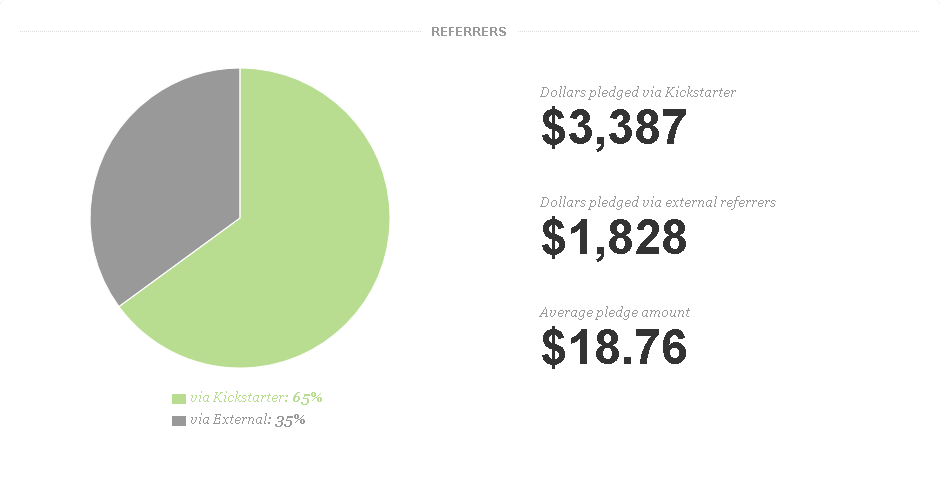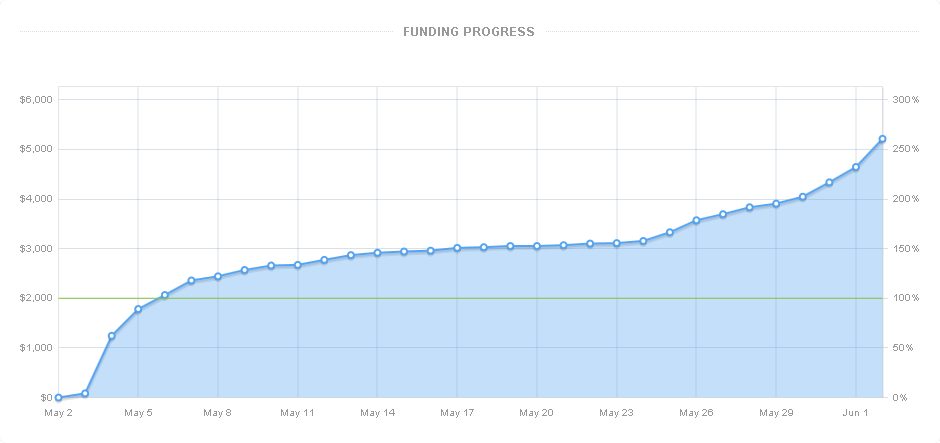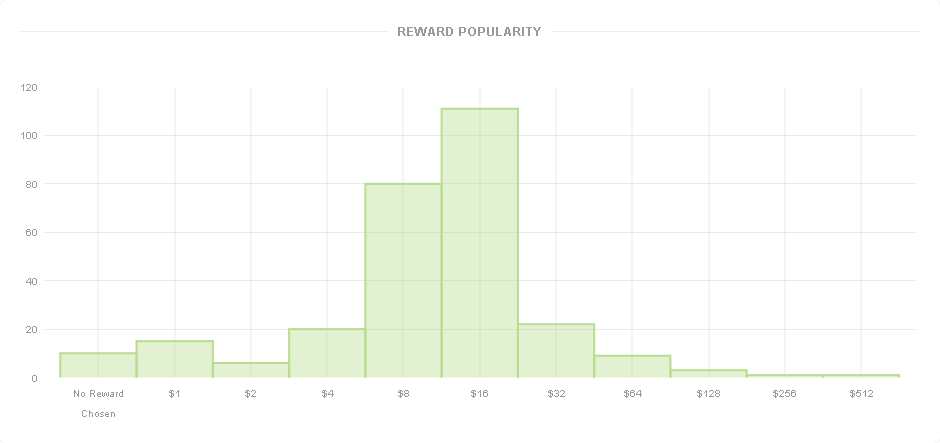Rubicon Kickstarter Post-Mortem
Full disclosure on the statistics of Rubicon's Kickstarter campaign:
:: STATS & COMMENTARY ::
———–
Goal: $2,000
Runtime: 29 days
I set my goal to the absolute minimum I needed to do the project. My expenses were low: I only needed to cover my own cost-of-living and I focused on backer rewards that were mostly free for me to fulfill (emails, beta tester status, adding backer names into the game). After doing the math, I was surprised by what a low number I needed- a lot of video game projects on the site ask for $10,000+. I guess there are perks to doing everything yourself.
———–
Promotion: VERY little
I made a facebook group, told people about it individually IRL, posted on a couple of forums that I’d found with an “Indie Gaming Forum” google search (never to visit them again), submitted a pathetic link or two to Reddit, and otherwise did everything the successful Kickstarter projects said not to do. The site itself does a good job of promotion- a good 21% of pledges were directed from other projects’ “related” sections.
Watching that pie chart change over time was interesting- I wish I had taken screenshots. Initially, for the first couple days, funding was almost exclusively (80-90%) through Facebook. I think that when I hit the $2000 goal, Facebook was at 75%. After that initial push, however, almost all the additional funding trickled in from people just finding the project through Kickstarter itself.
———–
Total pledged: $5,215 (260%)
Backers: 278 people
The trend of pledges followed the standard beginning-influx/ending-spike pattern of projects.
I honestly have no idea what caused the final uptick- I didn’t do any sort of final promotional stunt, and only $33 came in via the “Ending Soon” section of Kickstarter. It was possibly for psychology reasons?; I wonder if just the proportion of people visiting the page and ended up pledging went up because they saw it was ending soon.
Again, I wish I had taken snapshots of where the funding was coming from so I could see it change over time. All in all, ~4/5 of the pledges happened in the first and forth quarters.
———–
Average Pledge Amount: $18.76
Since I was working on a cumulative-reward model, the function of the $1-4 rewards was to 1) have little fun things that everybody would get and 2) establish the “powers of two” pattern. The first really substantial reward was at $8 for beta tester status, and the first physical object reward was at $32 for a poster.
This actually left me in a bind; neither really fit the $16 level (usually which gets you a copy of the game, but I’m releasing the game for free). It was too low for me to afford sending anyone anything and I’d already used the standard “your name will be in the credits” and “beta tester status” rewards. It was also too low for any sort of creative collaboration reward; there was no way I’d be able to manage that many people’s inputs. I eventually came up with what I thought was a clever way to get people to pay for the special edition of a free game- have their names be “cheat codes” that unlock some aesthetic features. It seemed to work out OK, and is a fun example of how working in a constrictive framework (in this case, “powers of two”) can force you to get creative.
———–
Project Video Plays: 6,120 (10% plays completed)
This is a cool stat I haven’t seen anyone else post. Apparently, out of 6,120 who pressed “play” on the video, only 612 people watched it all the way through, and of those (assuming everyone who pledged watched the video) only 278 decided to pledge. For those of you who are counting, that’s ~4.5% of people who pressed play ended up pledging. If they watch it all the way through, that jumped to an almost 50% pledge rate.
———–
Other Notes
I got a handful of requests from people who had either launched or were about to launch their project to give feedback on their pages. Lessons I learned in looking over them:
-
Make sure that you know exactly what you’re going to do, who is going to do it (note for Rubicon’s scale of project: the answer is “you”. None of this “I need to hire a programmer” stuff, go learn! It’s a good thing to be able to do anyway. I recommend BlitzMax), and how much it will cost.
-
You are not going to be able to make an MMORPG. Especially if you’ve never made a game before. Sorry.
-
Gameplay video! A demo! Previous work! A photocopy of your game-design diploma! Just have *something* that proves to people people that you have the chops to actually put your project together.
-
Keep your video short. A tiny bit of editing goes a long long way. (But ABSOLUTELY have a video! Even if people don’t watch it, they expect it to be there.)
-
You might want to make your page and then sit on it for a while before launching. Solicit feedback! I enjoyed reviewing other people’s pages and felt like I was able to provide constructive criticism, if for no other reason than that I was a fresh pair of eyes. Personally, I made a couple of absolutely vital tweaks (see: the $16 reward) a week after I originally planned to launch.
Which reminds me: set up your (Kickstarter-required) Amazon Payments account ahead of time. If the computer machines don’t like your bank account, verifying your ownership with it becomes a real headache. I had to track down the single fax machine on my campus a week and a half into the process to resolve it.
Hope this helps people put their own projects together! Feel free to give me a shout if you have any questions.









